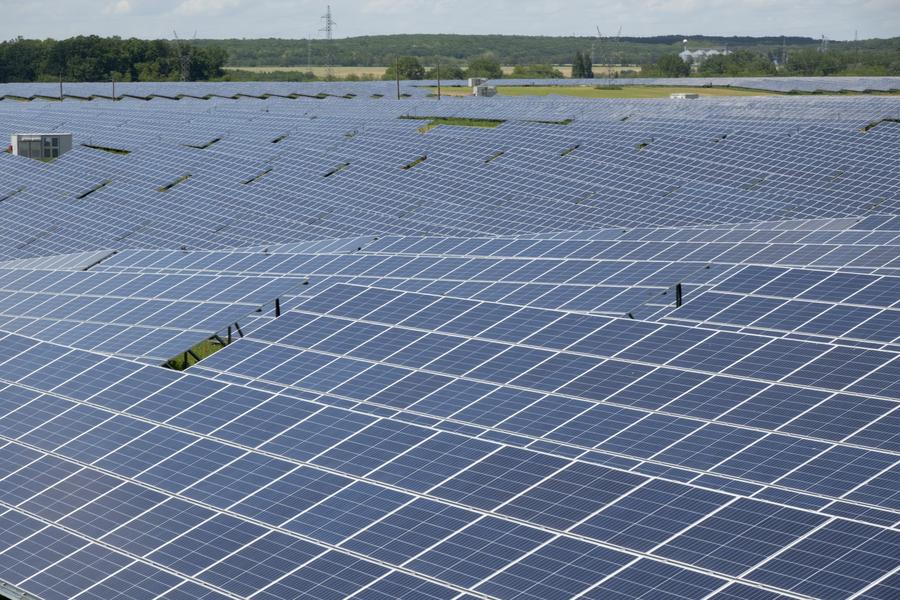China's new energy boom turbocharges global green transition


BEIJING -- China's unwavering focus on low-carbon development has fostered a new energy boom in the world's second-largest economy, with the tailwinds blowing beyond to speed up the world's green shift.
China's new energy boom not only underpins the realization of the country's green development goals, but also contributes to the global green transition by offering quality and affordable products, as well as Chinese technologies and solutions, said guest speakers at the fifth episode of the China Economic Roundtable, an all-media talk platform hosted by Xinhua News Agency.
Going low-carbon
In 2020, China made a solemn commitment to the world that it plans to peak carbon dioxide emissions before 2030 and achieve carbon neutrality before 2060.
The country has since then embarked on a fast track toward these goals, with notable areas including renewable energy capacity, industrial upgrades, and a world-leading position in new energy vehicles (NEVs), solar panels and lithium battery production.
Its NEV fleet has more than quadrupled since 2020 to over 20 million at the end of 2023, making China the world's largest producer and consumer of NEVs.
Its installed renewable energy capacity made history by surpassing thermal power for the first time last year, accounting for about half of the world's renewable energy capacity additions, according to Huo Fupeng, a National Development and Reform Commission official.
Calling China "the world's renewables powerhouse," the International Energy Agency (IEA) forecast that China will account for almost 60 percent of new renewable capacity expected to become operational globally by 2028.
Analysts attributed the new energy buildup to the country's pro-green-growth policies, its enormous domestic market, complete industrial and supply chains, and rich talent pool.
Taking NEVs as an example, He Hailin, an official with the Ministry of Industry and Information Technology, said China has the advantages of vast market demand, a complete industrial system to ensure supply, a huge and high-caliber workforce. Additionally, China's continued technological innovation and R&D also contribute towards the sector's competitive advantages.
Riding on China wave
China's new energy industry has not only achieved success in the domestic market, but is also actively going global, enhancing the sector's level of internationalization and competitiveness.
"China possesses both the capability and responsibility to leverage its comparative advantages in the new energy industry, contributing Chinese technologies, products, and solutions for the world," Huo said.
A report by the IEA said that in 2023, manufacturing a polysilicon PV module was 30 percent more expensive in the United States compared to China, 10 percent higher in India, and 60 percent higher in the EU.
This has led to a decline in solar module prices of more than 80 percent over the last decade, said Heymi Bahar, a senior analyst with the IEA, noting lower prices for solar modules has helped all countries expand solar PV deployment.
China has signed contracts with around 100 countries and regions to help them develop new energy projects, while its NEVs have been exported to more than 180 countries and regions, ranking among the most popular brands in countries including France, Thailand and Indonesia, Huo said.
While certain Western nations have portrayed China's escalating NEV exports as evidence of overcapacity, the speakers refuted such narrative, asserting that exports-based reasoning also cannot hold water.
He Hailin highlighted that a nation's production capacity surpassing domestic demand is a common phenomenon globally as it mirrors comparative advantages and results from international division of labor and cooperation.
Resorting to protectionism will not only disrupt the global industrial and supply chains of the new energy industry and undermine the world's low-carbon transition, but also backfire and impede the country's domestic industries, Huo said.
To tackle climate change, all countries and regions must leverage their respective competitive advantages, enhance open cooperation and policy coordination, promote innovative results sharing, and create an environment for fair competition and free trade, He said.




































